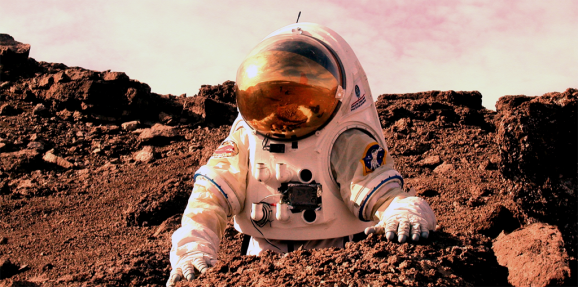SpaceX Wants To Put People On Mars Before NASA Does
This article is more than 2 years old
 The race to Mars is on. And by race I mean “painfully slow planning and plodding.” Not that I’m complaining, mind you. Putting people on Mars is no small feat — the journey itself is 7-8 months long (please tell me the astronauts will have Netflix!) and the astronauts will be subject to radiation the whole way. And then there’s everything that has to happen once we land, although I think a smart mission would involve sending robots ahead of time to set up some infrastructure. But more than anything, there’s the funding. It’s true that the House recently passed a reauthorization bill that supports manned Mars missions, but it’s unclear how much that will help, and to say that the price tag of such a mission is prohibitive would be an understatement. Still, despite all these obstacles, we humans are committed to spreading our species to another planet. The question is, who will be the first to do it? Will it be Mars One, the Dutch non-profit that’s currently whittling down a field of over 200,000 candidates for a Mars landing in 2025? Will it be NASA, with or without the help of other countries? Or will it be SpaceX, the renegades of the private space technology sector? Elon Musk is betting on the latter.
The race to Mars is on. And by race I mean “painfully slow planning and plodding.” Not that I’m complaining, mind you. Putting people on Mars is no small feat — the journey itself is 7-8 months long (please tell me the astronauts will have Netflix!) and the astronauts will be subject to radiation the whole way. And then there’s everything that has to happen once we land, although I think a smart mission would involve sending robots ahead of time to set up some infrastructure. But more than anything, there’s the funding. It’s true that the House recently passed a reauthorization bill that supports manned Mars missions, but it’s unclear how much that will help, and to say that the price tag of such a mission is prohibitive would be an understatement. Still, despite all these obstacles, we humans are committed to spreading our species to another planet. The question is, who will be the first to do it? Will it be Mars One, the Dutch non-profit that’s currently whittling down a field of over 200,000 candidates for a Mars landing in 2025? Will it be NASA, with or without the help of other countries? Or will it be SpaceX, the renegades of the private space technology sector? Elon Musk is betting on the latter.
Before the U.S. puts anyone on Mars, it has to finish developing its new space shuttle(s). There are a few candidates, including SpaceX’s Dragon V2, the newest iteration of the capsule it currently uses to ferry cargo to the ISS. NASA’s looking at putting a man on Mars sometime in the mid-2030s, but Elon Musk thinks that he can best that by about a decade, largely due to his confidence in the Dragon V2.

A couple years ago, Musk spoke about this idea, detailing his plan to send a group of no more than 10 pioneers to the Red Planet to get a colony started, and then eventually growing that colony to roughly 80,000 people. Musk said he had a way to sell one-way trips to Mars for $500,000 each. And while that might seem like a lot, if one is truly pulling up all stakes in everything one owns in the Earthly realm, then scraping together a half-million might not be impossible. I’m writing this with a straight face, even though if I were to sell everything I own, I could perhaps afford to send my big toe to Mars.
Some people, including astrophysicist Neil deGrasse Tyson, think it’s great for private companies to deliver cargo to the ISS and to launch satellites, but that private companies won’t and can’t lead the space frontier, largely because the risks and unknowns make it an improbable investment. Money would be a major obstacle for SpaceX, but Musk has some ideas about how to address that, and they don’t include making the mission a reality TV show.
SpaceX is competing for some big contracts, both for shuttles and for government satellite launches, but another idea is to go public with SpaceX. I can only imagine that people would be pretty quick to snap up some shares of this burgeoning powerhouse. One of SpaceX’s arguments since it appeared on the scene is how much cheaper its plans are than NASA’s — their cutting-edge technologies, particularly when it comes to reusable rockets, would drastically reduce the cost of satellite launches, so why not interplanetary travel? I’d definitely put my money (and faith) on SpaceX over Mars One when it comes to delivering people to Mars. Only time will tell whether Musk or Tyson ends up being right about this one.












